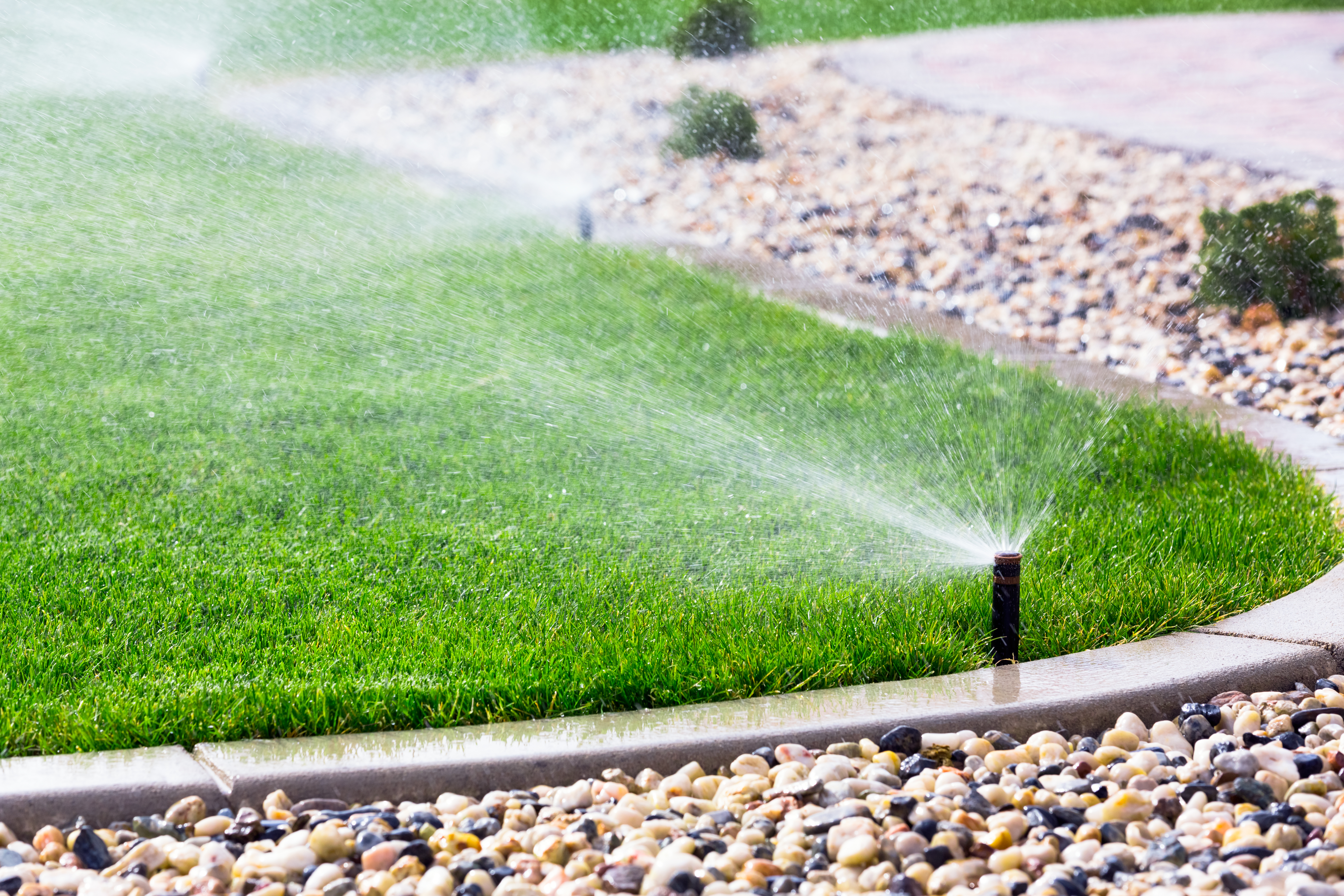Maintenance: Irrigation System Maintenance
Return to Landscape Guide Main Page
Starting and Ending the Irrigation Season Right
Give Automatic Sprinklers a Spring Tune-Up

Before you start spring watering, take the time to check your system:
- Make sure all manual drain valves are closed. An open drain valve can waste a lot of water and increase your water bill, costing you a lot of money. You may never even see the water, as it is draining into the ground.
- Open the main valve to the sprinkler system.
- Check all valve wires for frays and loose ends.
- Clean sprinklers to make sure spraying patterns are uniform.
- Check the vacuum breaker for leaks and spring tension. This assembly prevents the backflow of irrigation water into your home's drinking water pipes.
- Adjust all sprinklers so they spray the landscape, not the sidewalk, driveway, house or street.
- Set the timer for correct times and watering days. Change the battery in the timer if it has this option.
Hose-End Sprinkler Tune-Up
Hand-held and portable sprinklers need to be inspected in the spring, too. Here's a checklist:
- Good hose condition is important. Check for cracks, splits and coupling problems. Replace the rubber washers at the couplings for a snug fit.
- Check the sprinkler for leaks, clogs and malfunctions. Replace washers.
- Check hose bibs for leaks and clogs.
Use these guidelines to periodically check your sprinkler system throughout the summer, too.
Fall Shut-Down
In the fall, as your landscape is preparing for winter, your sprinkler system should be shut down and winterized before freezing temperatures arrive. Here's how:
Automatic Sprinklers:
- Close the main valve to the sprinkler system.
- Open all sprinkler control valves.
- Open all manual drain valves to drain the system.
- Drain the vacuum breaker (this may freeze and break if not drained).
- Allow a couple of hours for system drainage.
- Close the sprinkler control valves and the manual drain valves.
- Check the main valve to be sure it is closed tightly. If it isn't, tighten it and repeat steps 2 through 6.
- Cover the vacuum breaker to protect it against freezing. (Optional)
- Turn off the timer and unplug it.
Hose-End Sprinklers:
- Drain hoses and sprinklers.
- Repair any damage to the hoses and sprinklers.
- Disconnect and store them in a warm garage or shed.
Remember, these tips are only a partial guide to sprinkler maintenance. For more information, consult a specialist in sprinkler irrigation.

